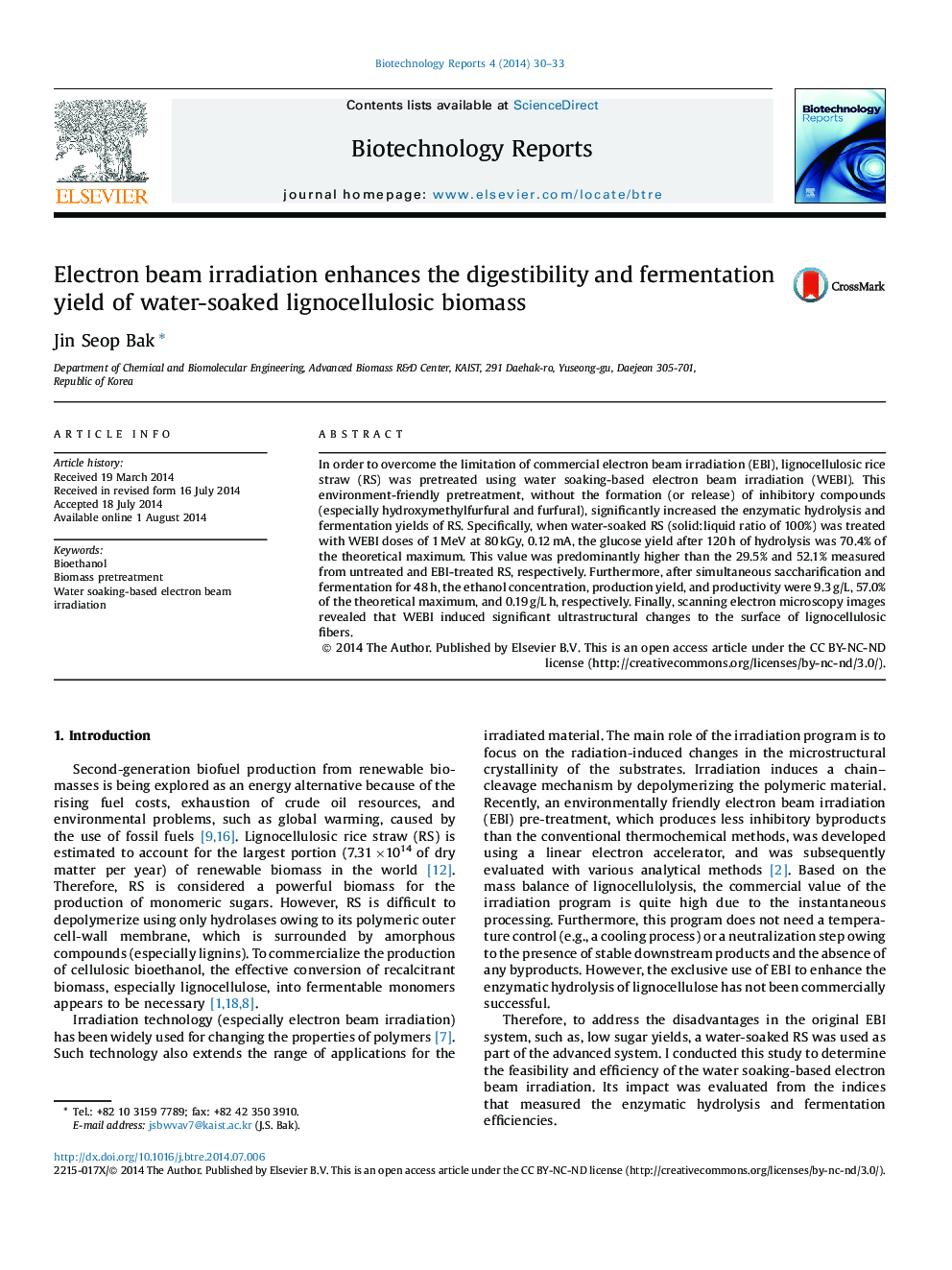| Article ID | Journal | Published Year | Pages | File Type |
|---|---|---|---|---|
| 870667 | Biotechnology Reports | 2014 | 4 Pages |
•Hydrolysis yield by WEBI is not less than that of a conventional system.•Adequate diffusion of the solvent can induce a high-yield of digestibility.•Ethanol productivity by WEBI is not less than that of a conventional system.•In environmentally friendly WEBI, inhibitory compounds were not detected.
In order to overcome the limitation of commercial electron beam irradiation (EBI), lignocellulosic rice straw (RS) was pretreated using water soaking-based electron beam irradiation (WEBI). This environment-friendly pretreatment, without the formation (or release) of inhibitory compounds (especially hydroxymethylfurfural and furfural), significantly increased the enzymatic hydrolysis and fermentation yields of RS. Specifically, when water-soaked RS (solid:liquid ratio of 100%) was treated with WEBI doses of 1 MeV at 80 kGy, 0.12 mA, the glucose yield after 120 h of hydrolysis was 70.4% of the theoretical maximum. This value was predominantly higher than the 29.5% and 52.1% measured from untreated and EBI-treated RS, respectively. Furthermore, after simultaneous saccharification and fermentation for 48 h, the ethanol concentration, production yield, and productivity were 9.3 g/L, 57.0% of the theoretical maximum, and 0.19 g/L h, respectively. Finally, scanning electron microscopy images revealed that WEBI induced significant ultrastructural changes to the surface of lignocellulosic fibers.
